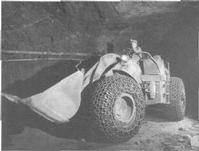


Chapter 10
I 1. Introduction
II 2. The Role Of Technology
III 3. Some Highlights Of Australian Minerals Technology
i Gold
ii Copper
iii Lead-zinc-silver
iv Technology in iron ore mining
v Iron and steel technology
vi Nickel
vii Mineral sands
viii Bauxite, alumina, aluminium
IV 4. Other Technological Achievements (in brief)
V 5. Export Of Technology
VI 6. Education And Research
VII 7. The Scientific Societies
VIII 8. Conclusion
References
Index
Search
Help
Contact us

Copper
Copper has a special place in Australian mining history, being the first metal to be produced in significant amount. The establishment of copper mining and smelting in the infant colony based on the first European settlement in Adelaide in 1836 dates from the discovery of rich oxidized copper deposits at Kapunda in 1842 and Burra in 1844. This preceded the gold discoveries in New South Wales and Victoria by a decade, during which shipments of high grade copper ore to smelters at Swansea in the United Kingdom contributed perhaps ten percent of the current world consumption of about 100,000 tonnes of the metal. Within five years of the discovery at Burra smelters had been erected -a colossal achievement in the circumstances since every item had to be imported from Europe. Further discoveries of both oxidized and sulphide ores and installation of further smelters and an electrolytic refinery kept the industry in continuous production until 1923 and at varying levels of production thereafter.
Copper provided the kind of stimulus for South Australia that the gold discoveries did for Victoria and New South Wales a decade later, and the contributions by the Cornish miners and metallurgists on the copper fields benefited the later manpower requirements of Broken Hill in particular but also of Cobar, Mount Morgan, Charters Towers, Mount Lyell and many other fields throughout Australia and beyond. The
Cornish influence in the Australian mining industry is truly legendary.

Later discoveries of copper at such centres as Cobar (1869), Mount Morgan (1882), Mount Lyell (1885) and in Queensland at Gympie, Cloncurry, etc. were to diminish the relative importance of the South Australian copper fields, and these were in turn to be dwarfed by the latter-day emergence of Mount Isa as the dominant Australian source of copper. However, each of these fields provided highly individual knowledge and experience in mining and metallurgical and geological techniques. Currently Olympic Dam (Roxby Downs) is adding to the reputation of Australia in innovative exploration, mining and extractive metallurgy.
Mount Lyell technology
As an outstanding instance of individuality among Australian copper producers reference is appropriate to the extraordinary achievements at Mount Lyell, which in an extremely isolated high rainfall region combined a full spectrum of mining, concentrating, smelting and electrolytic refining, complete with hydro-electric power production and railway transportation including an Abt rack and pinion section. Despite the extraordinary natural difficulties the Mount Lyell company pioneered some remarkable features in mining and metallurgical techniques. Mining involved the extraction of both highly pyritic and highly siliceous orebodies by a combination of open cut and underground operations; for the latter a hydraulic filling technique using barren surface glacial till was employed at one stage.
 |
Australian Academy of Technological Sciences and Engineering |  |
© 1988 Print Edition pages 742 - 743, Online Edition 2000
Published by Australian Science and Technology Heritage Centre, using the Web Academic Resource Publisher
http://www.austehc.unimelb.edu.au/tia/708.html